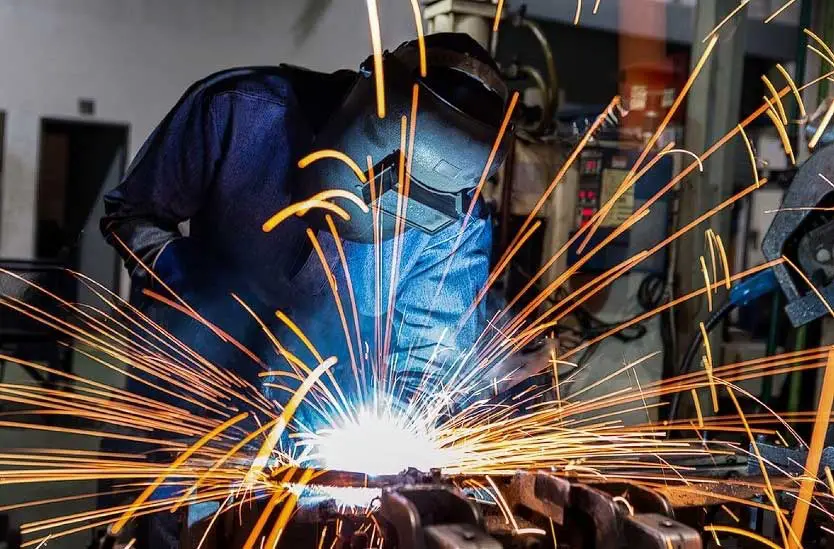Table of Contents
Welding Works Risks
In this post, we shall describe the Risks in Welding Works, which are very common in industries.
As a mechanical engineer, you are well aware that there are several types of welding procedures with distinct risks.
Welding is a safe job if proper protective measures are followed to safeguard the welder from potential hazards.
If required health and safety control measures are not applied following threats are there for a welder.
Electric Shock Risk During Welding
Remember that a workplace condition can be electrically hazardous if you are working in a moist atmosphere/location, your clothing is wet, and you are working on metallic/conducive platforms/surfaces i.e. aluminum scaffolds, gratings, and flooring.
Similarly, if you are working in tight situations i.e. laying, sitting, or kneeling, the risk of your contact with the welding workpiece increases.
In order to keep yourself safe, attempt to protect your body from touching the welding metal and always try to use a rubber mat or wooden board for standing or lying during welding tasks.
Never ever try to rest your arms or other body parts on the workpiece i.e. the metal being welded.
Always keep your welding machine healthy; if you see any problem, contact your supervisor and don’t use it until it is checked and cleared by a competent person.
Use mandatory PPE (personal protective equipment) to protect yourself from any hazards involved.

Fire and Explosion Welding Risk
The hazard of fire and explosion is always there during the welding process if combustible material is present near the welding area.
Therefore the welders must guarantee that combustible chemicals that could ignite or explode are not present nearby.
In order to safeguard against fire risk, a hot work permit is generally necessary from safety supervisors. This process assures that the area has been checked and is clear for welding without the hazard of fire. Additionally, fire extinguishers are provided in the work environment, and welders are educated to use the same.
If you need to work in an area where combustible materials can not be avoided, you must use fire blankets to protect the substances from welding sparks.
Similarly, if flammable material is present within 35 feet of the welding area, a watcher must be deployed to monitor sparks’ flow and respond in case of fire.
Risk of Toxic Welding Gases and Fumes
Welding fumes and gases had been reported harmful if overexposed.
The most common welding gases include chromium, iron, manganese, nickel, etc, provided by both electrodes and base metals.
Welders can suffer from asthma and lung cancer if overexposed to chromium and nickel.
Similarly, overexposure to manginess might cause malfunction of the central nervous system.
Always follow the safety recommendations issued with the welding electrodes/accessories to avoid these negative effects.
A material safety data sheet is highly valuable for knowing the hazardous behavior of the item you are utilizing.
In order to keep yourself healthy, always attempt to keep your breathing away from welding gases and utilize sufficient ventilation in the welding area.
If appropriate ventilation is not feasible, then you must use certified respirators.
Regulatory authorities always specify permissible exposure limits, so you must examine the laws and limitations applicable in your location; in the USA, OSHA has defined allowable exposure limits.
These values are supplied as part of the MSDS of the chemicals and any harmful compounds or hazardous substances.
Eye Injury During Welding Process
The welding arc produces radiations i.e. IR (infrared) and UV (ultraviolet), that damage the eyes.
IR might cause your retinal burning since it is in the form of heat.
UV can cause eye burn, also known as welder’s flash.
Therefore welders must wear a suitable welding helmet with good-quality glasses.
Summary
These are several common risks that are associated with the welding process and can be avoided by taking required preventive measures and utilizing adequate PPE i.e. helmet, goggles, gloves, ventilators, etc. Finally, it is recommended always to implement the permit-to-work system for any welding project.
tag: risks in welding works

